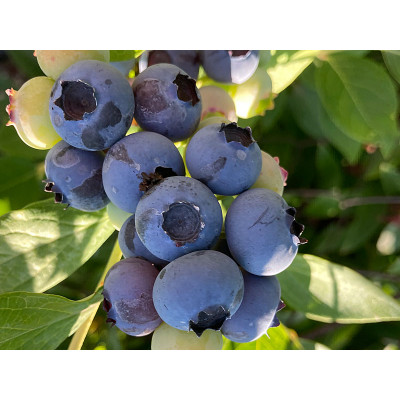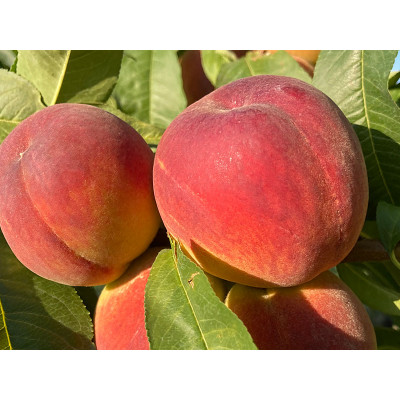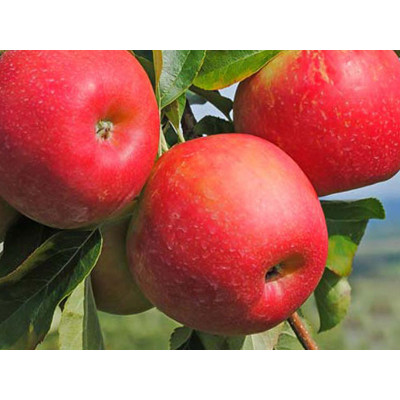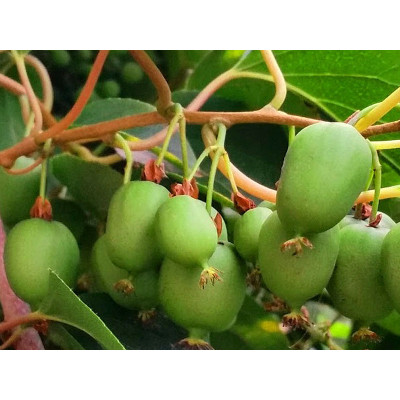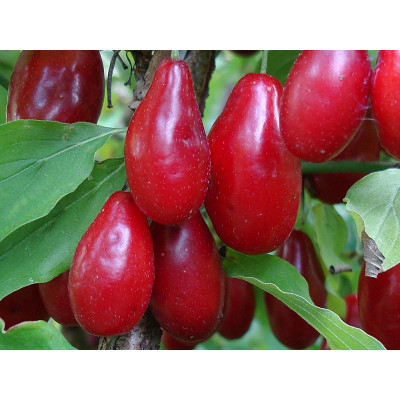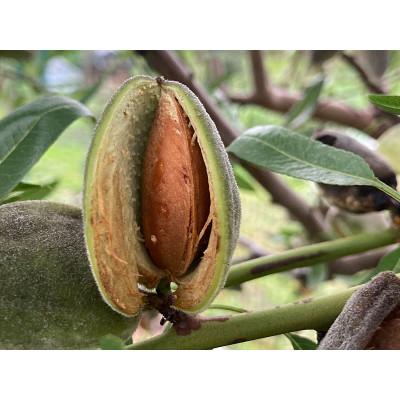DUBOVSKIJ ROZVOJ Table Grape Vine

- The shipping price depends on the weight of the ordered goods (the more products, the cheaper the price)
- after you have placed the plants in the shopping cart, enter “calculate provisional shipping price” in the shopping cart, after entering the data the eshop will calculate the provisional shipping price for you.
Ask a Question About This Product
| Specifications | |
| Height at sale | 70-90cm |
| Pot | C2 |
| Rootstock | SO4 – one of the most reliable rootstocks, ideal especially for soils with higher calcium content, where it prevents leaf yellowing. It gives grafted varieties medium-strong growth, promotes early ripening and high grape quality. |
| Ripening time | beginning of August |
We send goods on Monday, Tuesday, Wednesday, by agreement also Thursday or Friday.
- Stock: In Stock
- Model: Vitis
The DUBOVSKY ROZVOJ grape will be among the most interesting early table grapes that can be found on the market today. Already at first glance, they differ from the usual idea of the shape of the fruit, and the variety is even more interesting in its taste and characteristics. The elongated tip of the berries can even play with colour as they ripen after the main part of the berry, forming a light 'nose' which is a little slower to ripen. The clusters can weigh more than one kilogram. A healthy and vigorous plant can produce dark pink fruit over 4 centimetres in height and weighing up to 20 grams. Dubovsky Development originates from Russia. It was created by crossing the varieties Vostorg Krasjnij x Jubilee Novocherkaska. The relatively young variety is one of the most popular and sought-after in the world, especially for the unusual shape of the fruits, which are shaped like thick chilli peppers. It is characterised by vigorous growth, but also requires growth adjustment and thinning of both leaves and bunches to encourage the best quality crop and proper development on selected bunches. Indeed, for a little investment in reducing excess production, the grower is rewarded with extraordinary fruit. These can be among the most desirable things a commercial farm can offer to its buyers and customers, and so can a private garden to its grower and his guests. The Russian variety DUBOVSKY ROZVOJ is characterised by its extremely good resistance to fungal diseases. Its hardiness is reported to be around -20°C to -24°C. The sprawling plant can produce a high yield, so it is best to grow the aquatic variety in a location that allows access to the plant, its care and allows it to grow on a support. The fruit will withstand transport after harvesting without major damage, multiplying the commercial use.
The vine as plant and the grape as fruit
Tutifruti s.r.o. has a range of quality vine varieties in containers. This means that they can be planted throughout the entire growing season. It is important to ensure that the root ball in the container is intact when removing and transplanting. Growers do not have to worry about cutting the roots, the growth of the vines is not hindered or compromised by transplanting and the overall restart of the plant. With young plants, more care is taken with watering. Vines cannot be grown without support. In the gardens, therefore, supports, welded structures, concrete columns or temporary wooden solutions are created. The solution is also to attach them to walls and walls, where we avoid planting roots close to foundation walls or in an area marked by rubble and construction waste. Pergolas and tension wire are also suitable. Vines cannot be planted without support. Young plants require protection from frost. However, reinforced plants are already acquiring the resistance known for each species. Pruning during early spring is essential for the plant to bear fruit. The vines usually bear fruit during September, depending on the variety. Vines can be threatened by several diseases, the most common of which is mildew. Among the pests, it is the vine aphid. Resistant varieties are able to defend themselves naturally against diseases, or the incidence of possible diseases is minimal. Less resistant varieties can be treated with preventive products.
The vine is a plant of many varietal variations. Several cultures, phenomena, arts and several types of food and wine industry are based on it. It is a thermophilic plant, although for many species, thanks to their resistant properties and hardiness, it is possible to grow vines with good production even in the northern regions of Slovakia. The soil for vines should be nutritious, with the key elements for their cultivation - phosphorus, potassium, magnesium and calcium. Fertilisation is also possible with commercial fertilisers as well as many home-made organic solutions. The type of soil and the supply of these nutrients can to some extent influence the resulting taste of the grapes and wine. Having your own vines and growing your own fruit is a matter of growing passion, aesthetics, and necessity. Tasty fruit need not be the only reason for interest in the vine. In fact, it represents a living tool for design interventions in yards, gardens, parks, as well as places where the goal is to create a living pergola that adds shade on summer days. In such places outside the normal garden soil, we are even more concerned with soil nutrition and the impact of regular watering. The grapes have uses in juices, bourbons, or for home or professional wine, or for further processing. Table grapes will provide fresh tasty and fresh fruit for you and your loved ones, but overproduction will be used for further processing. For example, for drying, making jams, they can also be easily frozen, but folk recipes also know other ways of processing and neighbourly use of this fruit of refreshing taste.


